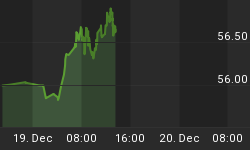8/19/2014 7:58:15 AM
Good morning Traders,
For years (14 now) we have advised on several of the same indicators, which gives us a good historic perspective. One thing we know is true, is that markets never sell off when everyone expects. How can we measure this expectation?
This is our morning note to clients. Feel free to reference it, use our images or quote it in your publications.

As you can see in this chart, the level of PUT buying on the QQQ is the most we've seen this year. This 'protection' is most often misplaced. And the mechanism (like shorting the market) causes the market to rise (or be relatively strong) as the market rises.
Why are traders so bearish? In this chart of the SPY and QQQ RSI, you can see the sell off in 2000 - if you traded through it, many people were wiped out. Why? Because the were programmed that markets don't sell off. The rally ending the 90's was dramatic. I recall it very well. We're not quite there yet. And it's never the same story. This decade it's about the Fed and Stimulus. But if you look at the price action from the 2009 bottom, you almost get a nose bleed.

As the Qs make newer highs, breadth isn't playing along. While it's too call that a bearish divergence in the current move, we already have one with the last two peaks. This reminds me of 2011, except that the price action is upward, not sideways. Note - before the 2011 sell off, the market was MAKING NEW HIGHS! The market sucked in traders and took them down. That's what the market does...

We've been talking about the tick lately as I've been doing some work on cumulative tick indicators. Unfortunately I can't find a good formula for doing a cumulative measure on the tick. This remains the best view - tick lows on a 5 and 13 day moving average. The sell pressure is low - which is a sign of how aggressive (or not) trading programs are getting.

And finally, one of the reasons markets don't behave exactly the same as before is that there are new tools to trade and they gain more and more popularity. This trading of the VIX which started back in 2006 and trading hundreds of contracts a day is now trading millions of contracts in a day! It's periodic influence on the market (or signal given) can be seen now as more and more hedge their portfolios with Vix options, which are very fast moving. So when this indicator rises, traders are betting that the VIX is going to fall. And the more bullish traders get, the more bearish the next move will likely be. Ok, the issue is that you have conflicting indicators. The QQQ pcr is overly bearish (maybe hedging) and this is overly bullish, so that tends to make the market more neutral here going into expiration.

At the end of the day, we need to add a long/short stock service to take advantage of some crazy potential moves about to come in the market. We'll have more on that later.
Regards,















